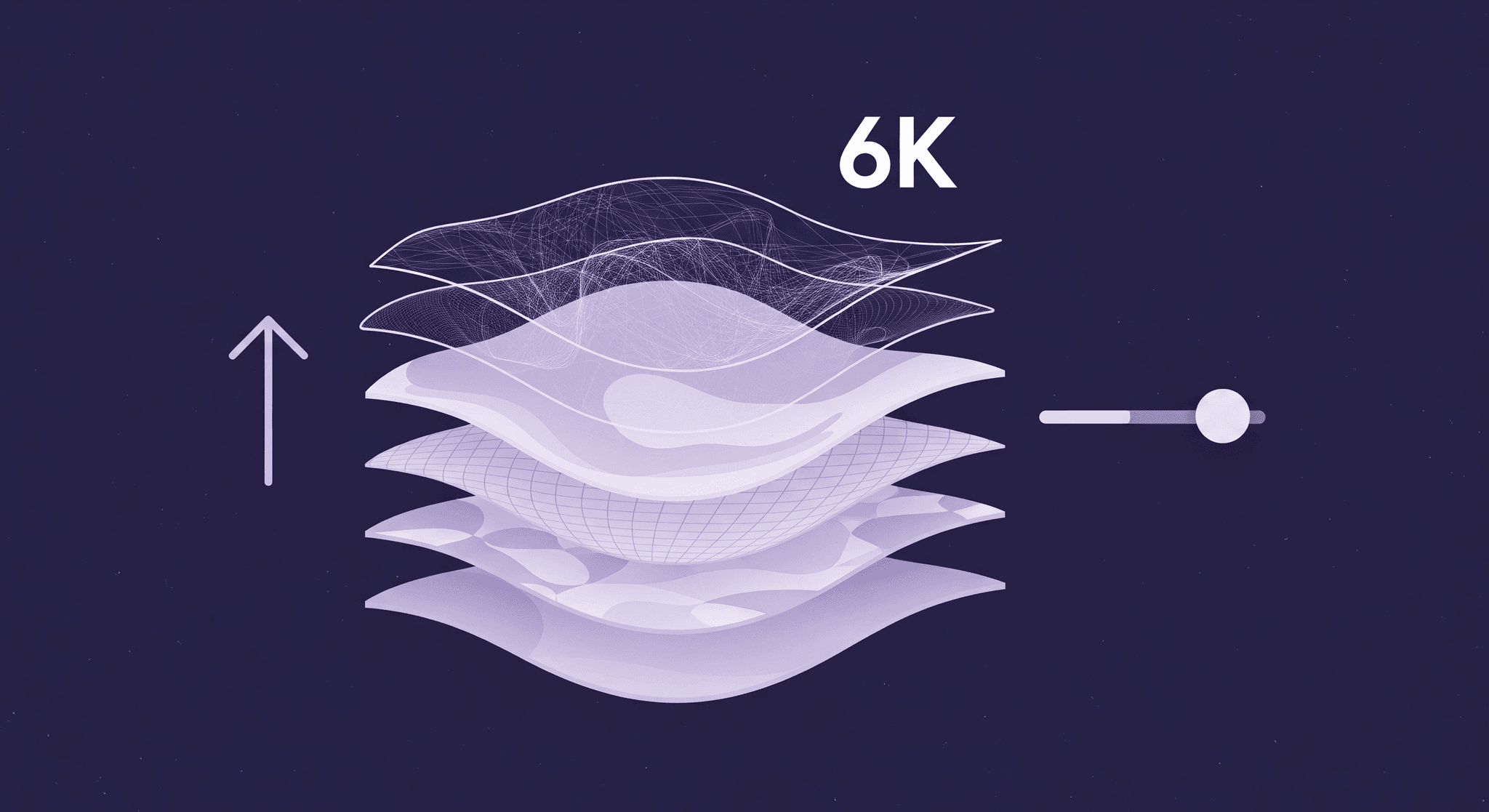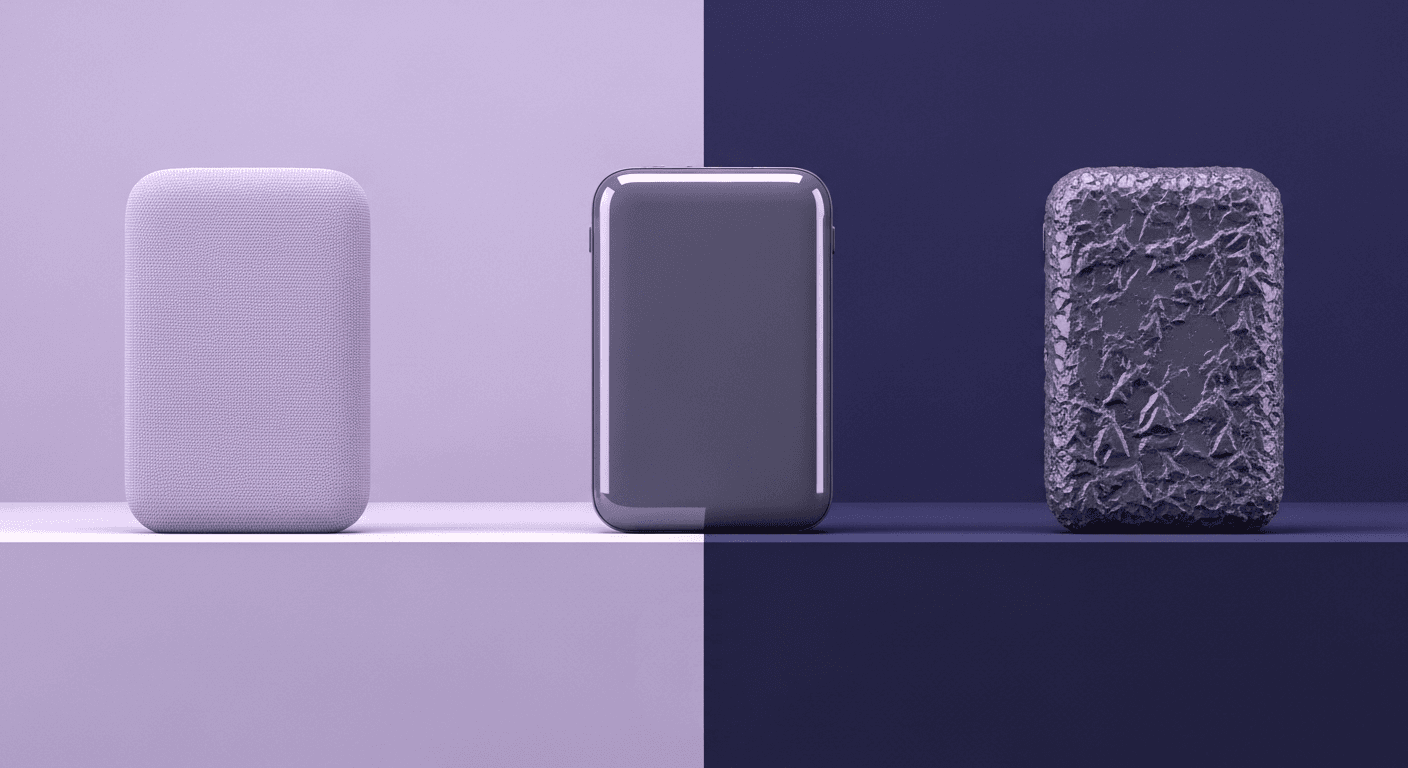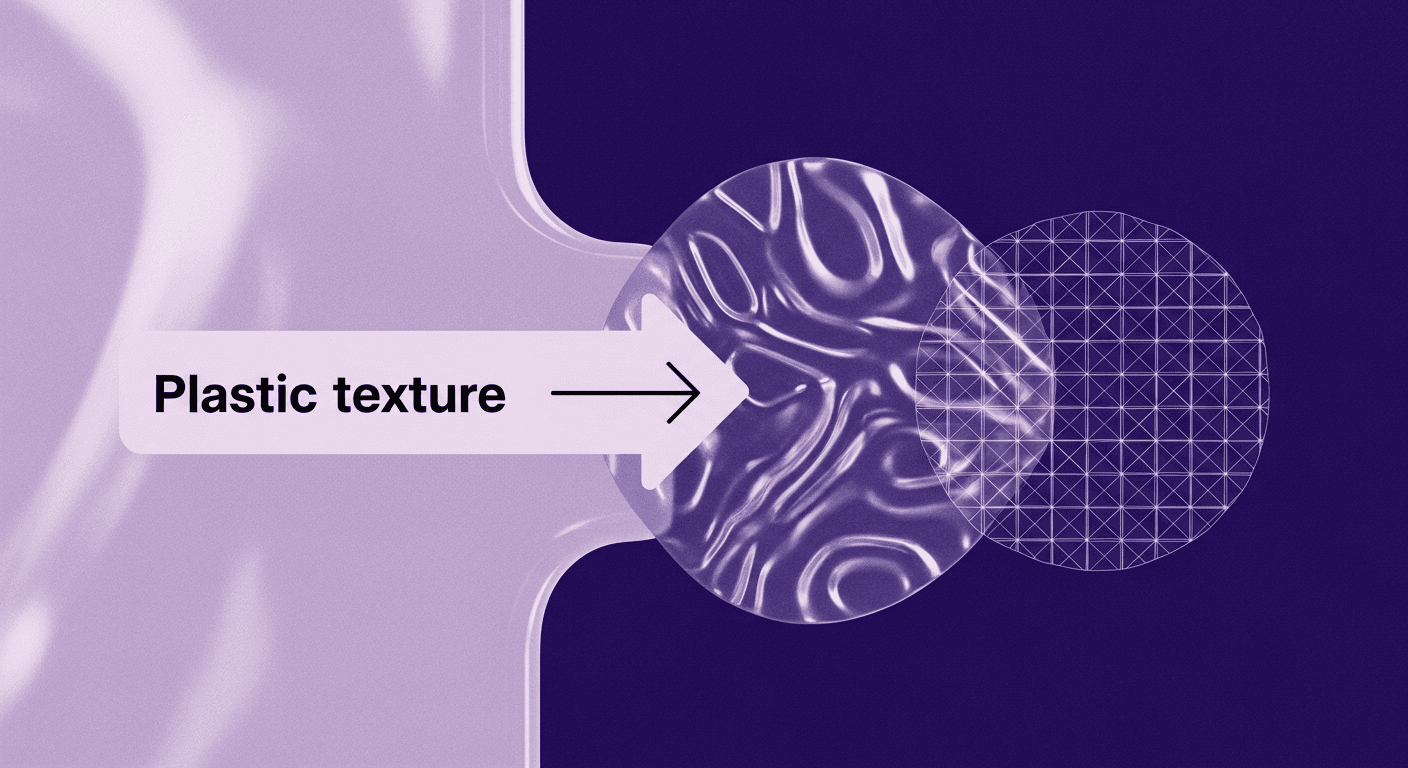Unlock Ultra-Realism: The Advantages of 6K Textures in Design and Rendering
By Mira Kapoor | 6 August 2025 | 13 mins read
Table of contents
Table of Contents
Good enough doesn't win awards or captivate players. For years, 4K has been the safe, reliable standard for textures, but is it the right standard for your most critical assets? This guide breaks down the real-world benefits of using 6K textures not just for visual fidelity, but also as a strategic tool to enhance storytelling, future-proof your art pipeline, and potentially reduce rework down the line. It’s not about throwing 6K at every object; it’s about making deliberate, high-impact choices that balance jaw-dropping detail with real-world performance constraints. We’ll unpack where they deliver the most value and how to deploy them without derailing your production.

Pushing past good enough: The core benefits of using 6K textures
Settling for good enough might get assets across the finish line, but it rarely leaves a lasting impression. 6K textures aren’t about overkill; they’re about precision and intent. When used thoughtfully, they can elevate your work from functional to unforgettable, delivering visual fidelity that pulls users deeper into the world you're building. Here’s what happens when you push beyond the baseline.
How 6K textures improve visual fidelity and realism
Think of a hero asset, like a character's primary weapon. At 4K, you see the steel blade and the leather-wrapped hilt. At 6K, you see the microscopic scratches from a thousand parries, the subtle discoloration where the warrior’s grip has worn the leather smooth, and the fine pores in the hide. These are the details that sell the fantasy. For cinematic sequences or close-up shots, this level of fidelity is non-negotiable. It’s the difference between an object that looks rendered and an object that feels crafted.
- Macro detail (The what): The general form, color, and material type. A 4K texture tells you you’re looking at a brick wall.
- Micro detail (The why): The history and interaction embedded in the surface. A 6K texture shows the fine sand in the mortar, the subtle erosion from acid rain, and the faint traces of a painted sign from decades ago. It tells you what kind of brick wall it is and what it's been through.
This is where high-resolution design textures stop being a technical spec and start becoming a tool for immersion. When you’re aiming for photorealism, especially in next-gen titles, these micro-details are what bridge the uncanny valley. It’s a leap in quality that allows your art to stand up to scrutiny, whether it’s from a player’s 4K monitor inches away or a marketing screenshot blown up to poster size.
Beyond just pixels: How 6K textures enhance narrative detail
Case study: The worn lever of a Derelict Machine
Imagine a puzzle in a derelict factory. The player needs to pull a large, rusted lever to restore power. Let’s break down how texture resolution impacts the story here:
At 2K/4K: The lever looks rusty and old. The player understands its basic function. The material reads as metal. It does the job.
At 6K: The story becomes richer. You can see where decades of hands have worn the rust away, polishing the metal underneath to a dull sheen. You notice a small, stamped maintenance number, almost completely obscured by grime. There are faint scratches near the base, suggesting someone tried to pry it loose. The texture is no longer just a material; it’s a history lesson. It tells the player that this lever was important, frequently used, and perhaps a point of struggle.
This is how 6K textures improve visual fidelity in a way that matters. It’s not just eye-candy. It's narrative efficiency. You’re communicating backstory and context without a single line of dialogue or text. This level of environmental storytelling makes the world feel lived-in and consequential, encouraging players to look closer and invest more deeply in the world you’ve built.
The artist dilemma: Balancing detail with performance
High resolution comes at a cost, and for artists, that cost isn’t just measured in pixels, it’s measured in frame rates, memory usage, and production hours. The challenge isn’t whether 6K looks better (it does); it’s about knowing where and how to use it without breaking the technical budget. Let’s break down what’s at stake and how to strike the right balance.
How do 6K textures impact rendering performance?
The primary impact is on texture streaming and memory bandwidth. When a player turns a corner and the engine needs to load a new set of textures, larger files mean more data needs to be pulled from storage into VRAM. This can cause stuttering or visible texture pop-in, especially on hardware with slower storage or less VRAM.
Here’s a straightforward look at the trade-offs:
- VRAM usage: This is the most significant hit. More VRAM is consumed per asset, which means you can have fewer unique, high-resolution assets on screen at once before hitting your memory ceiling.
- Rendering quality: The upside is obvious, unparalleled detail up close. For hero assets, cinematic characters, or first-person models (like the player’s hands and weapon), the quality jump is undeniable.
- Framerate: If your scene is constantly streaming massive 6K textures, you can see framerate drops. However, if used strategically on a few key assets while the rest of the scene uses optimized textures, the impact can be minimal. It’s not about using 6K everywhere; it’s about using it where it counts.
What are the memory requirements for 6K textures?
A single, uncompressed 6144x6144 8-bit RGBA texture is roughly 144 MB. Even with modern compression formats like BC7, which can offer a 6:1 compression ratio, you’re still looking at around 24 MB per texture map. A full PBR material set (Albedo, Normal, Roughness, AO, etc.) for one asset could easily consume over 100 MB of VRAM.
Here's how to tie that back to project management:
1. Define your tiers: Not every platform gets the 6K treatment. Your PC build on “Ultra” settings can leverage 6K for key assets. Your console versions (like PS5/Xbox Series X) might use those same 6K sources but streamed at a slightly lower mip level, or use a 4K version downscaled from the 6K master. Your lower-spec SKUs will get the 4K or 2K versions.
2. Budget per frame: Work with your engineers to define a strict VRAM budget for a typical frame. If your budget is 8GB for textures, you can calculate exactly how many 6K, 4K, and 2K assets you can afford to show at once.
3. Factor it into timelines: Creating high-quality 6K textures takes more time and requires more powerful artist workstations. This needs to be built into your production schedule and asset cost calculations. It might mean fewer assets overall, but the ones you have are of a much higher quality—a strategic choice that often pays off.
The strategic decision: When and how to deploy high-resolution textures
Not every asset deserves 6K, and that’s exactly the point. Strategic deployment is what separates a bloated game build from a refined, performance-savvy masterpiece. By defining clear priorities and understanding when resolution truly matters, you can create an asset pipeline that delivers both impact and efficiency. Here's how to make those high-stakes calls with confidence.
When should you choose 6K over 4K or 2K textures?
Here’s a simple framework for asset priority:
- Tier 1 (use 6K): Hero assets. These are the stars of your game. This includes main character models, their primary weapons and gear, key narrative objects, and any other asset that will get significant screen time and close-up shots. Think of the dashboard in a first-person driving game or the protagonist's face in a dialogue-heavy RPG.
- Tier 2 (use 4K): Primary environmental assets & important props. These are the high-quality assets that build your world. This could be the modular wall pieces for a main architectural set, large foliage that the player walks by, or secondary characters. They need to look good, but they don't need the extreme micro-detail of a hero asset.
- Tier 3 (use 2K or lower): Background & tertiary assets. These are elements that fill out the scene but are rarely inspected closely. Think distant buildings, small debris on the ground, or props that are only seen from afar. Using lower resolutions here is a smart and necessary optimization.
Factoring in camera distance is key. An object that’s always 50 meters away from the player will never benefit from a 6K texture. Your level of detail (LOD) system is your best friend here, automatically switching to lower-resolution textures as the player moves away from an object.
How 6K texture performance in 3D rendering can streamline your workflow
Think about your art pipeline. If you start with a 4K texture and later realize you need it for a cinematic close-up, your only option is to either accept a blurry, upscaled mess or have an artist rebuild the texture from scratch. Both are bad options. But if you build a master library of 6K textures for your important assets, you create flexibility.
- Generate LODs with ease: From a 6K master, you can generate pristine 4K, 2K, and 1K versions automatically. The downscaled textures will have a higher quality and retain more detail than if they were created at those lower resolutions natively. This reduces manual rework for different platforms and detail levels.
- Reduce outsourcing dependency: By building a high-quality internal library, you reduce the need to send assets back to outsourcers for revisions when a higher-resolution version is needed. The master asset is already approved and available, streamlining coordination and cutting costs.
- Marketing and cinematics: Your marketing team will love you. When they need ultra-high-resolution screenshots or video renders for a trailer, you can provide them with assets that hold up under extreme scrutiny, without pulling artists off their current tasks.
Future-proofing your art pipeline with advanced texture rendering
By standardizing on a higher resolution for your master library, you are aligning today's work with tomorrow's graphic design technologies. When the time comes to remaster your game or develop a sequel, your most important assets are already at a quality that will meet or exceed future hardware capabilities. You won’t have to start from scratch. This forward-thinking approach turns texture creation from a disposable, project-specific task into a long-term investment in your studio's IP.
Ultimately, the goal is to build an art pipeline that is resilient, flexible, and ready for the future. Embracing 6K textures strategically is a major step in that direction. It's not just about chasing pixels; it's about making deliberate choices that enhance visual storytelling, streamline development, and ensure your art stands the test of time.
The bottom line: It's an investment, not an expense
It's easy to see the debate as a simple trade-off: stunning detail on one side, performance budgets on the other. But that’s the old way of looking at it.
The smart play isn’t about chasing the highest resolution for every single asset. It's about shifting your mindset. Creating master assets at 6K isn't an expense you incur for one project; it's an investment you make in your studio’s entire art library.
Think about it:
- The cost of rework: How many times has marketing needed a higher-res shot, or a cinematic demanded a close-up, forcing your team to send an asset back for a costly overhaul?
- The flexibility to scale: With a 6K master, you generate pristine 4K, 2K, and 1K versions with a script, not with an artist's time. Your pipeline becomes more efficient, not more bloated.
This isn’t about overhauling your entire workflow overnight. It's about making a strategic choice, starting with your next hero asset. Build it at 6K. See how it streamlines your LOD creation. Use it for your next marketing blast.
Ultimately, using 6K textures where they matter most gives you more than just beautiful pixels. It gives you control, flexibility, and a library of assets that are ready for whatever comes next. You’ve got the eye for quality, now you have a framework to deliver it without breaking the bank.

Mira Kapoor
Mira leads marketing at Texturly, combining creative intuition with data-savvy strategy. With a background in design and a decade of experience shaping stories for creative tech brands, Mira brings the perfect blend of strategy and soul to every campaign. She believes great marketing isn’t about selling—it’s about sparking curiosity and building community.
Latest Blogs

How 4K Seamless Textures Transform Flat CG Into Tangible Fabric
PBR textures
Fabric textures

Max Calder
Nov 21, 2025

Beyond Color and Gloss: How Plastic Texture Tells Your Product's ...
Product rendering
Texture creation

Max Calder
Nov 19, 2025

Decode Plastic Material Texture: The Team Language That Prevents ...
Product rendering
Texture creation

Mira Kapoor
Nov 17, 2025
